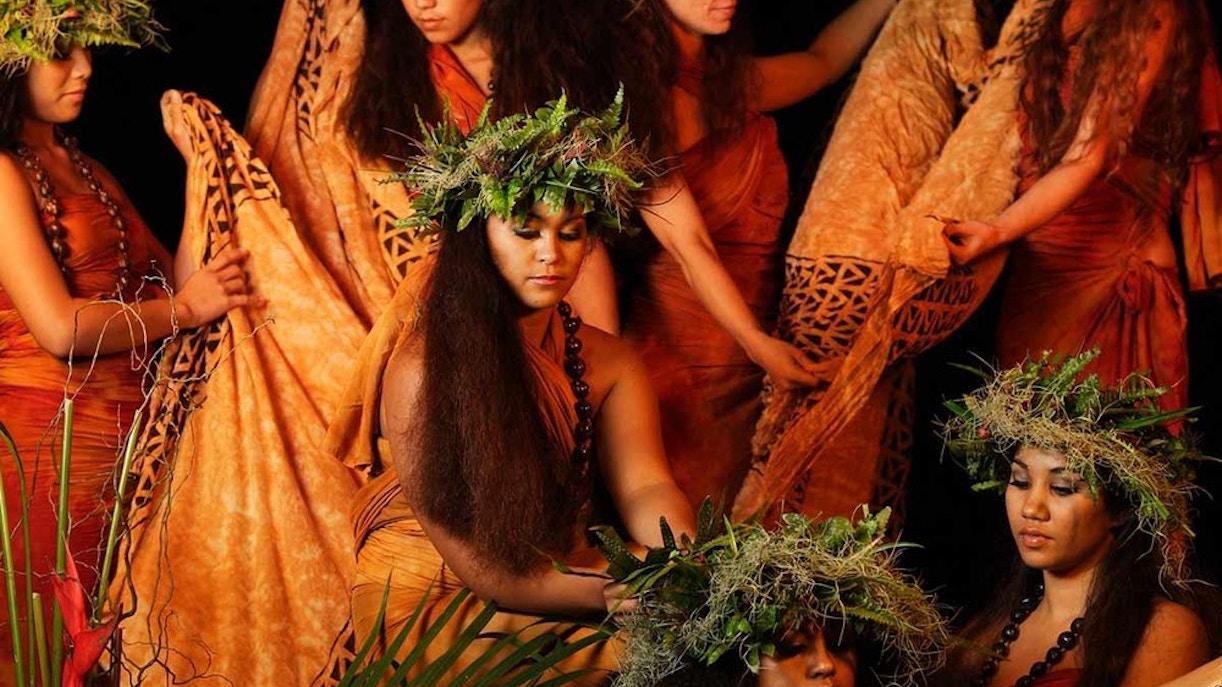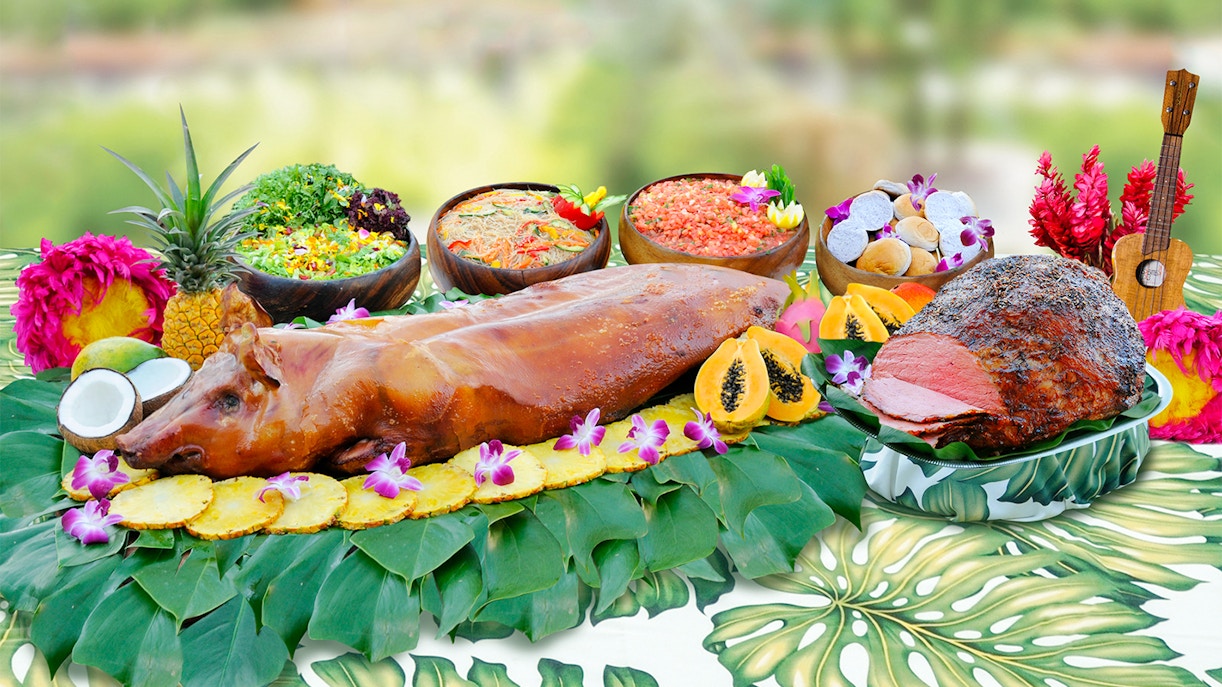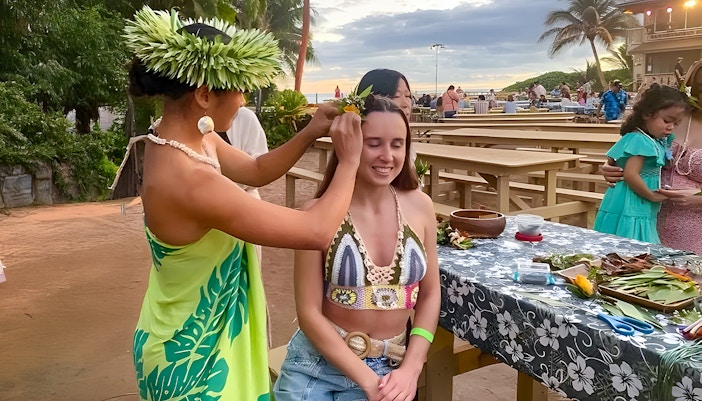Hawaiian traditions and cultural practices you will find at a luau
Luau | A Hawaiian tradition

Luaus were originally ritualistic, ceremonial feasts that marked milestone events in Hawaiian tribes. Hawaiian royalty hosted grand celebrations with hundreds of guests to commemorate battle victories, marriage ceremonies, births, and more.
Over time, luaus have evolved to become a celebration of Hawaiian culture as a whole. They incorporate various traditional and ceremonial practices and offer visitors a way to experience Hawaiian festivities and way of life firsthand.
Traditional cultural practices you’ll find at a Hawaiian luau

Conch shell
The conch shell, or pu, is a traditional Hawaiian instrument blown at the start of a luau. The sound signals the beginning of the celebration and gathers the people together. In ancient times, it was also used to announce arrivals or important events.

Imu ceremony
The imu is an underground oven used to prepare the kalua pig, which is usually the main feature dish at any luau. The imu ceremony begins with unearthing the food, which has been slow-cooked for hours, typically overnight, underground. The imu ceremony is a culinary luau tradition that honors the connection between people, food, and the earth.

Hula dancing & live music
Hula dancing and live Hawaiian music are key elements to any luau. The hula is so much more than a dance; it is a form of storytelling, used to narrate legends, history, and emotions through movement. It’s usually accompanied by a ukulele, pahu drums, or slack-key guitar. The music and hula performances preserve Hawaiian heritage while inviting guests to experience it firsthand.

Storytelling
Storytelling has always been central to Hawaiian gatherings, and luaus are no exception. Stories pass down the teachings of the past and the history of the islands. Stories at luaus ensure that the Hawaiian identity and values continue to be remembered and shared with every generation.
Evolution of traditional practices at modern luaus

- Food: Traditional dishes like poi and kalua pig remain central, but modern luaus often include a wider variety of foods to cater to diverse tastes. From macaroni salads to char siu pork, the menu reflects Hawaii’s multicultural influences while honoring its roots.
- Live shows for storytelling: Performances at luaus now weave together dance, chants, and visual effects to tell Hawaiian legends in a more elaborate and engaging way. This adaptation helps audiences connect with cultural stories while making them entertaining for all ages.
- Diverse culture inclusivity in performances: Modern luaus highlight not only Hawaiian traditions but also dances and music from Polynesian neighbors like Samoa, Tahiti, and New Zealand. This inclusion celebrates the shared heritage and history of the Pacific Islands.
- Expansion of luaus: Once intimate community gatherings, luaus have evolved into large celebrations that welcome visitors from around the world. This expansion bridges the gap between Hawaiian culture and global audiences, sharing the spirit of Aloha on a much larger scale.
Book Hawaii luau tickets
Frequently asked questions about luau traditions and culture
In Hawaiian culture, food represents abundance and community. A luau feast is about bringing people together and sharing in gratitude. The act of eating side by side reflects unity and the Hawaiian spirit of generosity.
Chants, or oli, are used to honor ancestors, tell stories, and mark the significance of the event. At luaus, they remind us that the celebration is more than food and dance; it is rooted in tradition. They create a sacred moment that connects the past with the present.
Traditionally, luaus were large community gatherings, and outdoor spaces allowed everyone to come together comfortably. Being outside also connects the people to nature, which is deeply valued in Hawaiian culture. Today, the open-air setting enhances the festive, island atmosphere.
Leis are a traditional Hawaiian symbol of love, friendship, and respect. While not traditionally a part of luaus, they are now offered to guests as a way of welcoming them with the spirit of Aloha.



